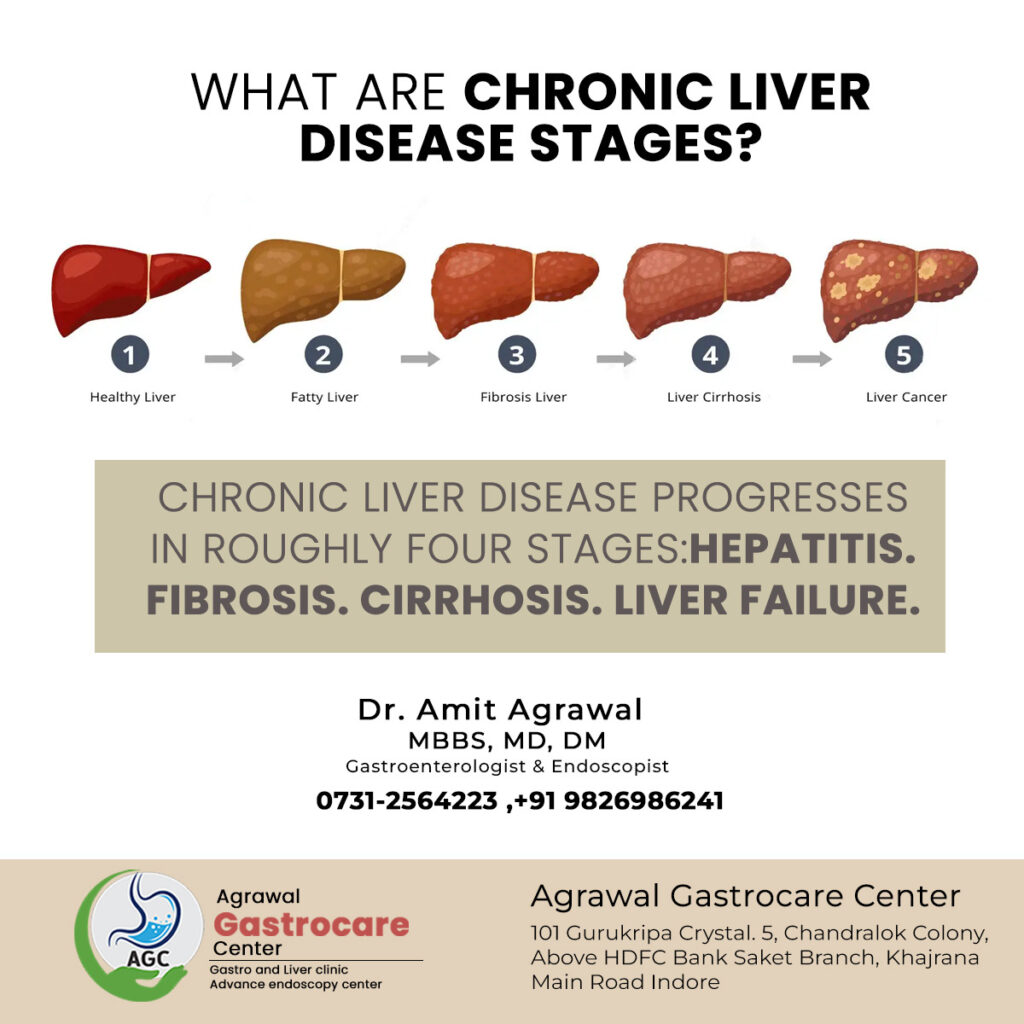What are Chronic Liver Disease Stages?
Chronic liver disease isn’t something that happens overnight. It usually progresses slowly through different stages, and understanding these stages can help us manage the condition better. Let’s explore the stages of chronic liver disease in easy-to-understand terms.

1. Inflammation
The first stage is like a little red flag that your liver is under stress. When the liver is injured—maybe by too much alcohol, a virus, or a genetic condition—it responds by becoming inflamed, a bit like how your skin turns red and puffy when you hurt it.
2. Fibrosis
If the inflammation sticks around for a long time and isn’t treated, scar tissue starts to form. Imagine if you kept getting a cut on the same spot on your skin over and over—the area would start to get tough from all the healing.
The liver tries to heal itself by making scar tissue, but if too much scar tissue forms, it begins to replace healthy liver tissue.
3. Cirrhosis
When the scarring takes over and the liver gets hard, it’s called cirrhosis. At this point, the liver can’t just bounce back, and the scarring is more permanent. Cirrhosis makes it difficult for the liver to manage these tasks.
People at this stage might start to notice symptoms, like feeling tired, seeing veins pop out on their belly, or their skin and eyes getting a yellowish tint, which is called jaundice.
4. Decompensated Cirrhosis
Decompensated cirrhosis is a red alert stage. This means the liver has gotten so scarred it can hardly work at all. By now, symptoms are more severe, and there could be serious complications like fluid buildup in the belly, bleeding in the stomach or esophagus, and reduced brain function due to the liver’s inability to clear toxins from the blood.
5. Liver Cancer or Failure
The final and most severe stage is when parts of the liver turn cancerous or the liver just stops working—what’s known as liver failure. The signs and symptoms are serious and can include everything from swelling in the legs and abdomen to more intense jaundice, confusion from the buildup of toxins, and a tendency to bleed or bruise easily. Treatment options vary and can include medication, lifestyle changes, or in intense cases, a liver transplant.
Conclusion
If you or someone you know might be at risk, it’s important to work closely with healthcare providers to catch any changes early, manage symptoms, and slow down the progression of the disease.
Dr. Amit Agarwal
Director & Gastroenterologist Consultant
Agarwal Gastrocare Center Indore



